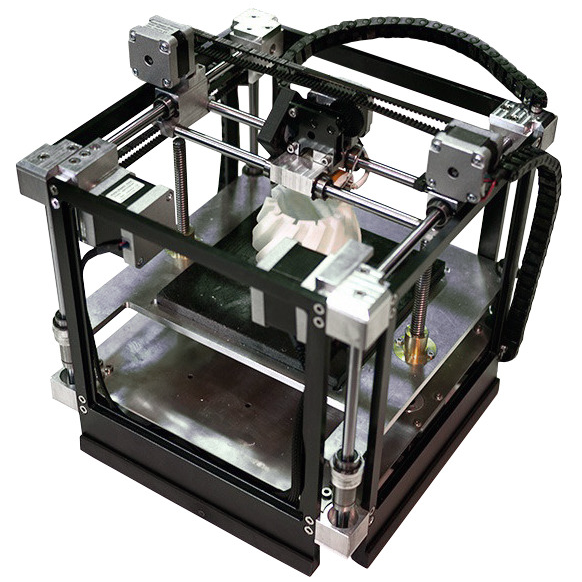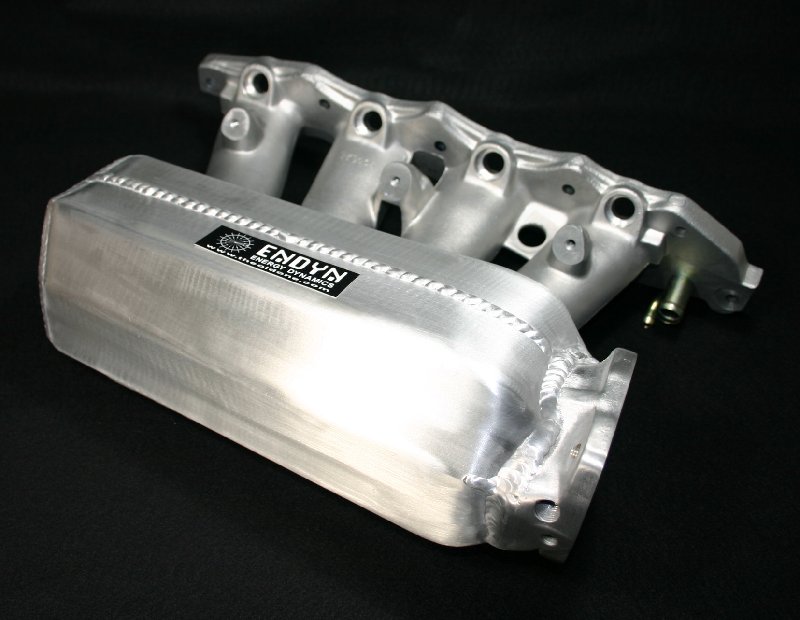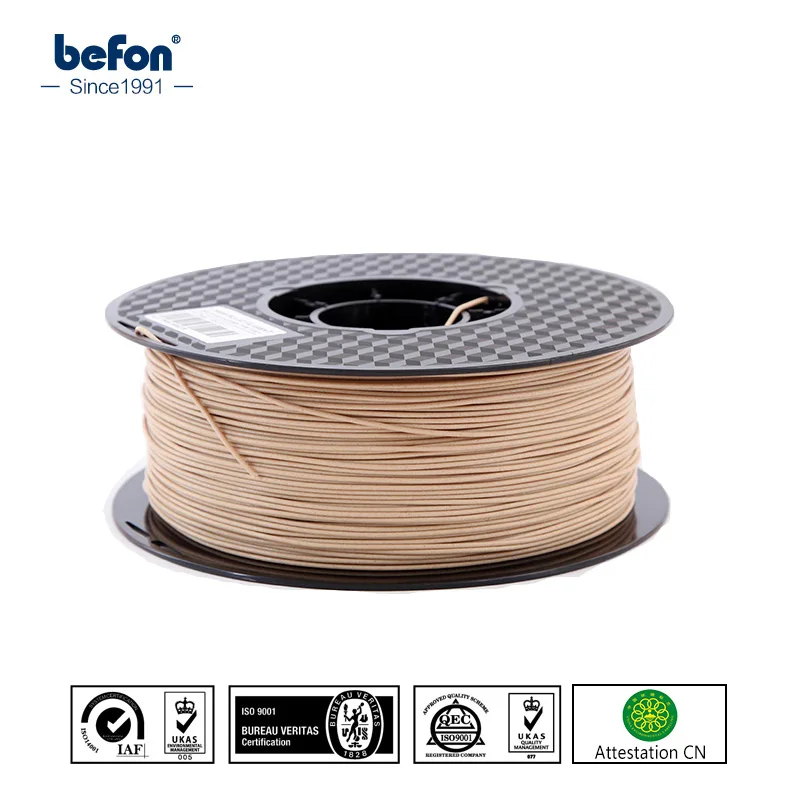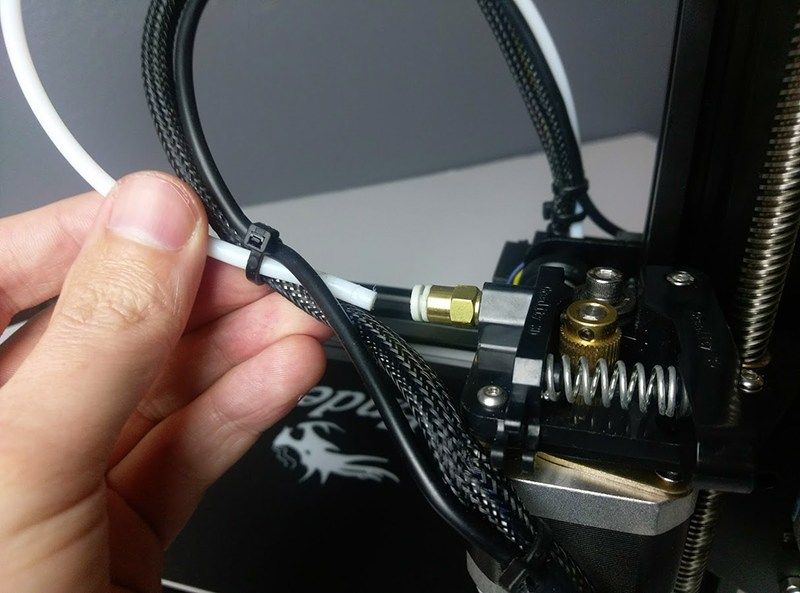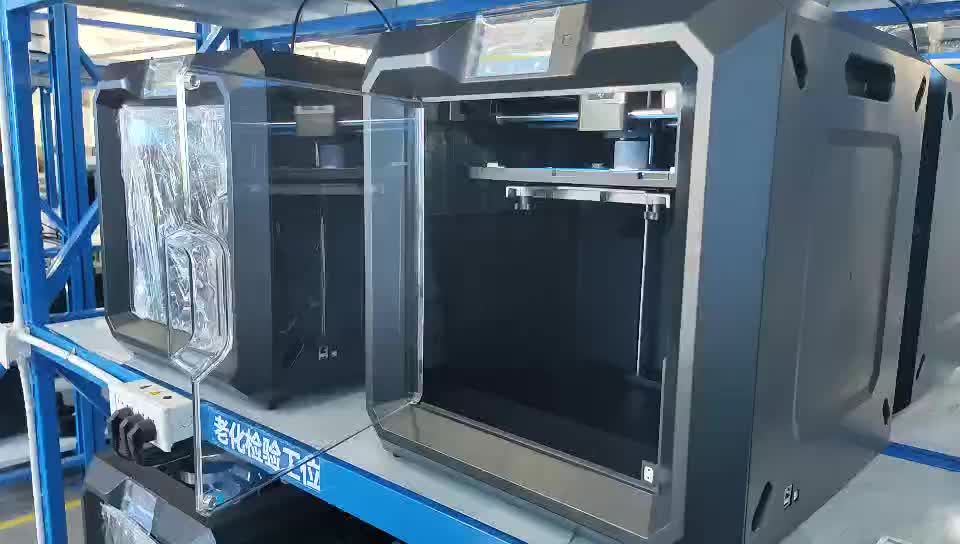3D printer revolution
The 3-D Printing Revolution
Idea in Brief
The Breakthrough
Additive manufacturing, or 3-D printing, is poised to transform the industrial economy. Its extreme flexibility not only allows for easy customization of goods but also eliminates assembly and inventories and enables products to be redesigned for higher performance.
The Challenge
Management teams should be reconsidering their strategies along three dimensions: (1) How might our offerings be enhanced, either by us or by competitors? (2) How should we reconfigure our operations, given the myriad new options for fabricating products and parts? (3) How will our commercial ecosystem evolve?
The Big Play
Inevitably, powerful platforms will arise to establish standards and facilitate exchanges among the designers, makers, and movers of 3-D-printed goods. The most successful of these will prosper mightily.
Leer en español
Ler em português
Industrial 3-D printing is at a tipping point, about to go mainstream in a big way. Most executives and many engineers don’t realize it, but this technology has moved well beyond prototyping, rapid tooling, trinkets, and toys. “Additive manufacturing” is creating durable and safe products for sale to real customers in moderate to large quantities.
The beginnings of the revolution show up in a 2014 PwC survey of more than 100 manufacturing companies. At the time of the survey, 11% had already switched to volume production of 3-D-printed parts or products. According to Gartner analysts, a technology is “mainstream” when it reaches an adoption level of 20%.
Among the numerous companies using 3-D printing to ramp up production are GE (jet engines, medical devices, and home appliance parts), Lockheed Martin and Boeing (aerospace and defense), Aurora Flight Sciences (unmanned aerial vehicles), Invisalign (dental devices), Google (consumer electronics), and the Dutch company LUXeXcel (lenses for light-emitting diodes, or LEDs). Watching these developments, McKinsey recently reported that 3-D printing is “ready to emerge from its niche status and become a viable alternative to conventional manufacturing processes in an increasing number of applications. ” In 2014 sales of industrial-grade 3-D printers in the United States were already one-third the volume of industrial automation and robotic sales. Some projections have that figure rising to 42% by 2020.
” In 2014 sales of industrial-grade 3-D printers in the United States were already one-third the volume of industrial automation and robotic sales. Some projections have that figure rising to 42% by 2020.
Further Reading
More companies will follow as the range of printable materials continues to expand. In addition to basic plastics and photosensitive resins, these already include ceramics, cement, glass, numerous metals and metal alloys, and new thermoplastic composites infused with carbon nanotubes and fibers. Superior economics will eventually convince the laggards. Although the direct costs of producing goods with these new methods and materials are often higher, the greater flexibility afforded by additive manufacturing means that total costs can be substantially lower.
With this revolutionary shift already under way, managers should now be engaging with strategic questions on three levels:
First, sellers of tangible products should ask how their offerings could be improved, whether by themselves or by competitors. Fabricating an object layer by layer, according to a digital “blueprint” downloaded to a printer, allows not only for limitless customization but also for designs of greater intricacy.
Fabricating an object layer by layer, according to a digital “blueprint” downloaded to a printer, allows not only for limitless customization but also for designs of greater intricacy.
Second, industrial enterprises must revisit their operations. As additive manufacturing creates myriad new options for how, when, and where products and parts are fabricated, what network of supply chain assets and what mix of old and new processes will be optimal?
Third, leaders must consider the strategic implications as whole commercial ecosystems begin to form around the new realities of 3-D printing. Much has been made of the potential for large swaths of the manufacturing sector to atomize into an untold number of small “makers.” But that vision tends to obscure a surer and more important development: To permit the integration of activities across designers, makers, and movers of goods, digital platforms will have to be established. At first these platforms will enable design-to-print activities and design sharing and fast downloading. Soon they will orchestrate printer operations, quality control, real-time optimization of printer networks, and capacity exchanges, among other needed functions. The most successful platform providers will prosper mightily by establishing standards and providing the settings in which a complex ecosystem can coordinate responses to market demands. But every company will be affected by the rise of these platforms. There will be much jockeying among incumbents and upstarts to capture shares of the enormous value this new technology will create.
Soon they will orchestrate printer operations, quality control, real-time optimization of printer networks, and capacity exchanges, among other needed functions. The most successful platform providers will prosper mightily by establishing standards and providing the settings in which a complex ecosystem can coordinate responses to market demands. But every company will be affected by the rise of these platforms. There will be much jockeying among incumbents and upstarts to capture shares of the enormous value this new technology will create.
These questions add up to a substantial amount of strategic thinking, and still another remains: How fast will all this happen? For a given business, here’s how fast it can happen: The U.S. hearing aid industry converted to 100% additive manufacturing in less than 500 days, according to one industry CEO, and not one company that stuck to traditional manufacturing methods survived. Managers will need to determine whether it’s wise to wait for this fast-evolving technology to mature before making certain investments or whether the risk of waiting is too great. Their answers will differ, but for all of them it seems safe to say that the time for strategic thinking is now.
Their answers will differ, but for all of them it seems safe to say that the time for strategic thinking is now.
Additive’s Advantages
It may be hard to imagine that this technology will displace today’s standard ways of making things in large quantities. Traditional injection-molding presses, for example, can spit out thousands of widgets an hour. By contrast, people who have watched 3-D printers in action in the hobbyist market often find the layer-by-layer accretion of objects comically slow. But recent advances in the technology are changing that dramatically in industrial settings.
Some may forget why standard manufacturing occurs with such impressive speed. Those widgets pour out quickly because heavy investments have been made up front to establish the complex array of machine tools and equipment required to produce them. The first unit is extremely expensive to make, but as identical units follow, their marginal cost plummets.
Additive manufacturing doesn’t offer anything like that economy of scale.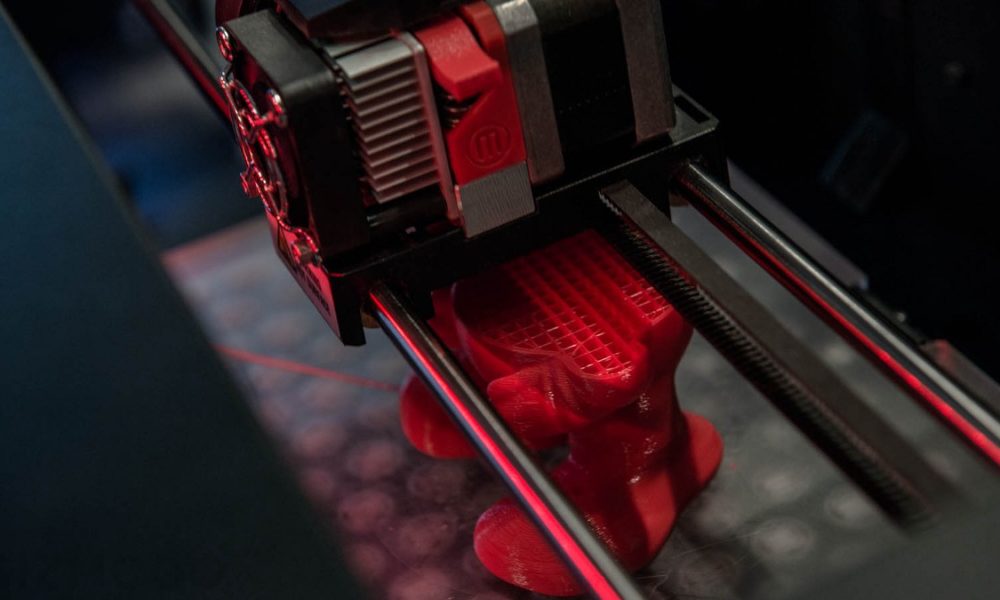 However, it avoids the downside of standard manufacturing—a lack of flexibility. Because each unit is built independently, it can easily be modified to suit unique needs or, more broadly, to accommodate improvements or changing fashion. And setting up the production system in the first place is much simpler, because it involves far fewer stages. That’s why 3-D printing has been so valuable for producing one-offs such as prototypes and rare replacement parts. But additive manufacturing increasingly makes sense even at higher scale. Buyers can choose from endless combinations of shapes, sizes, and colors, and this customization adds little to a manufacturer’s cost even as orders reach mass-production levels.
However, it avoids the downside of standard manufacturing—a lack of flexibility. Because each unit is built independently, it can easily be modified to suit unique needs or, more broadly, to accommodate improvements or changing fashion. And setting up the production system in the first place is much simpler, because it involves far fewer stages. That’s why 3-D printing has been so valuable for producing one-offs such as prototypes and rare replacement parts. But additive manufacturing increasingly makes sense even at higher scale. Buyers can choose from endless combinations of shapes, sizes, and colors, and this customization adds little to a manufacturer’s cost even as orders reach mass-production levels.
A big part of the additive advantage is that pieces that used to be molded separately and then assembled can now be produced as one piece in a single run. A simple example is sunglasses: The 3-D process allows the porosity and mixture of plastics to vary in different areas of the frame. The earpieces come out soft and flexible, while the rims holding the lenses are hard. No assembly required.
The earpieces come out soft and flexible, while the rims holding the lenses are hard. No assembly required.
Printing parts and products also allows them to be designed with more-complex architectures, such as honeycombing within steel panels or geometries previously too fine to mill. Complex mechanical parts—an encased set of gears, for example—can be made without assembly. Additive methods can be used to combine parts and generate far more interior detailing. That’s why GE Aviation has switched to printing the fuel nozzles of certain jet engines. It expects to churn out more than 45,000 of the same design a year, so one might assume that conventional manufacturing methods would be more suitable. But printing technology allows a nozzle that used to be assembled from 20 separately cast parts to be fabricated in one piece. GE says this will cut the cost of manufacturing by 75%.
U.S. hearing aid companies converted to 100% 3-D printing in less than 500 days.
Additive manufacturing can also use multiple printer jets to lay down different materials simultaneously.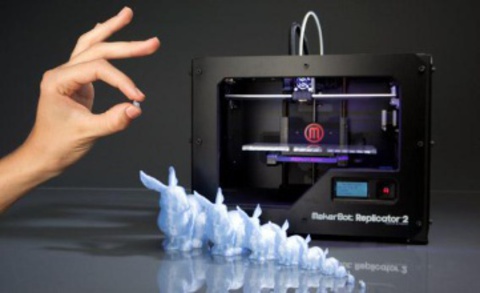 Thus Optomec and other companies are developing conductive materials and methods of printing microbatteries and electronic circuits directly into or onto the surfaces of consumer electronic devices. Additional applications include medical equipment, transportation assets, aerospace components, measurement devices, telecom infrastructure, and many other “smart” things.
Thus Optomec and other companies are developing conductive materials and methods of printing microbatteries and electronic circuits directly into or onto the surfaces of consumer electronic devices. Additional applications include medical equipment, transportation assets, aerospace components, measurement devices, telecom infrastructure, and many other “smart” things.
The enormous appeal of limiting assembly work is pushing additive manufacturing equipment to grow ever larger. At the current extreme, the U.S. Department of Defense, Lockheed Martin, Cincinnati Tool Steel, and Oak Ridge National Laboratory are partnering to develop a capability for printing most of the endo- and exoskeletons of jet fighters, including the body, wings, internal structural panels, embedded wiring and antennas, and soon the central load-bearing structure. So-called big area additive manufacturing makes such large-object fabrication possible by using a huge gantry with computerized controls to move the printers into position. When this process has been certified for use, the only assembly required will be the installation of plug-and-play electronics modules for navigation, communications, weaponry, and electronic countermeasure systems in bays created during the printing process. In Iraq and Afghanistan the U.S. military has been using drones from Aurora Flight Sciences, which prints the entire body of these unmanned aerial vehicles—some with wingspans of 132 feet—in one build.
When this process has been certified for use, the only assembly required will be the installation of plug-and-play electronics modules for navigation, communications, weaponry, and electronic countermeasure systems in bays created during the printing process. In Iraq and Afghanistan the U.S. military has been using drones from Aurora Flight Sciences, which prints the entire body of these unmanned aerial vehicles—some with wingspans of 132 feet—in one build.
Three-Dimensional Strategy
This brief discussion of additive manufacturing’s advantages suggests how readily companies will embrace the technology—and additional savings in inventory, shipping, and facility costs will make the case even stronger. The clear implication is that managers in companies of all kinds should be working to anticipate how their businesses will adapt on the three strategic levels mentioned above.
Offerings, redesigned.
Product strategy is the answer to that most basic question in business, What will we sell? Companies will need to imagine how their customers could be better served in an era of additive manufacturing. What designs and features will now be possible that were not before? What aspects can be improved because restrictions or delivery delays have been eliminated?
What designs and features will now be possible that were not before? What aspects can be improved because restrictions or delivery delays have been eliminated?
For example, in the aerospace and automotive industries, 3-D printing will most often be used in the pursuit of performance gains. Previously, the fuel efficiency of jet fighters and vehicles could be enhanced by reducing their weight, but this frequently made them less structurally sound. The new technology allows manufacturers to hollow out a part to make it lighter and more fuel-efficient and incorporate internal structures that provide greater tensile strength, durability, and resistance to impact. And new materials that have greater heat and chemical resistance can be used in various spots in a product, as needed.
Want to know how fast the 3-D future is coming? Don’t look only at adoption rates among manufacturers. Look at the innovation rates of inventors. In 2005 only 80 patents relating to additive manufacturing materials, software, and equipment were granted worldwide, not counting duplicates filed in multiple countries.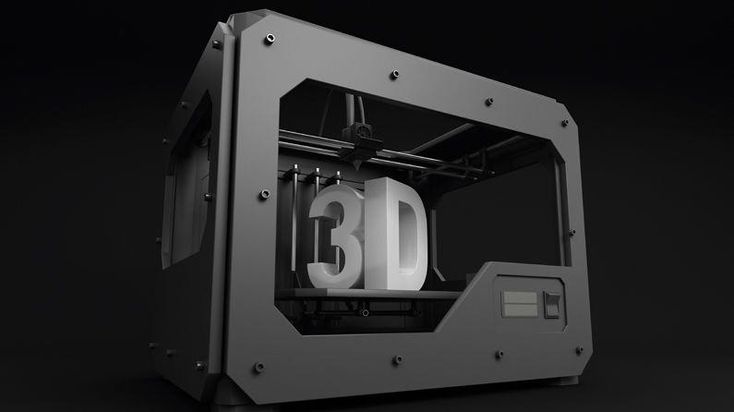 By 2013 that number had gone into orbit, with approximately 600 new nonduplicative patents issued around the globe.
By 2013 that number had gone into orbit, with approximately 600 new nonduplicative patents issued around the globe.
What are some of the companies behind these patents? Not surprisingly, the two leaders are Stratasys and 3D Systems, rivals that have staked out positions in additive manufacturing. They hold 57 and 49 nonduplicative patents respectively. As befits its printing heritage, Xerox, too, has invested heavily in additive technologies for making electronics and has developed a strong alliance with 3D Systems. Panasonic, Hewlett-Packard, 3M, and Siemens likewise hold numerous patents.
But surprisingly, the largest users of 3-D printing have also been active innovators. Fourth on the list, with 35 patents, is Therics, a manufacturer of medical devices. These commercial companies understand additive manufacturing’s potential to give them important advantages over competitors.
Also noteworthy among patent holders are companies that straddle both worlds. GE and IBM are important manufacturers but are increasingly invested in platforms that optimize value chains run by other companies.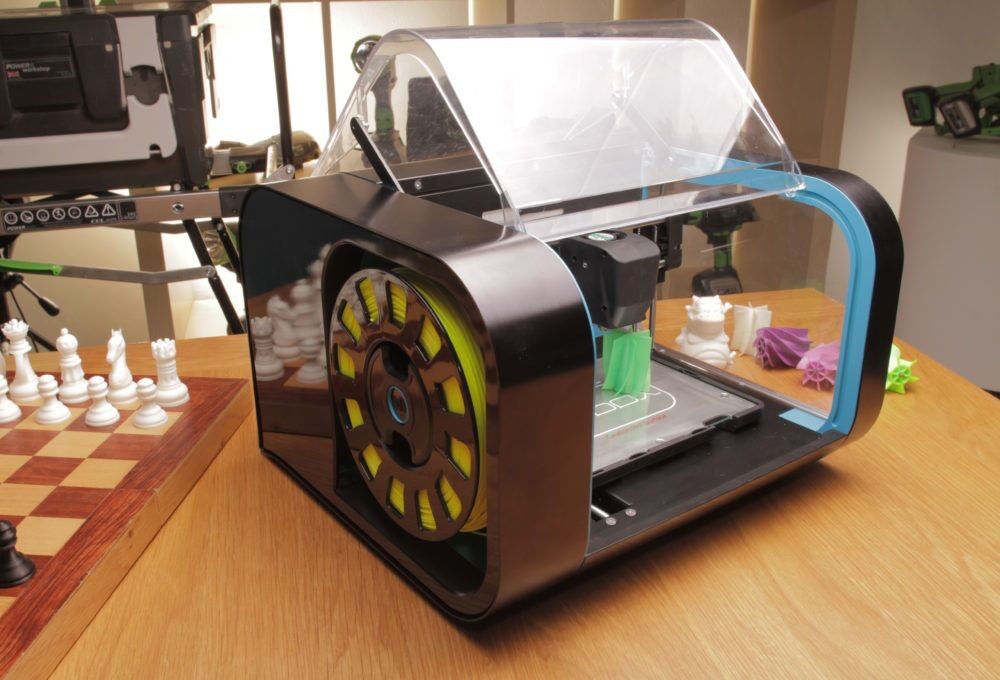 GE (11 patents) is developing the industrial internet, and IBM (19) has worked out what it is calling the “software-defined supply chain” and optimization software for smart manufacturing systems. Both are well positioned to take on similar roles with regard to additive manufacturing—and both bear watching as models for how incumbents can capture disproportionate value from a highly disruptive technology.
GE (11 patents) is developing the industrial internet, and IBM (19) has worked out what it is calling the “software-defined supply chain” and optimization software for smart manufacturing systems. Both are well positioned to take on similar roles with regard to additive manufacturing—and both bear watching as models for how incumbents can capture disproportionate value from a highly disruptive technology.
In other industries, the use of additive manufacturing for more-tailored and fast-evolving products will have ramifications for how offerings are marketed. What happens to the concept of product generations—let alone the hoopla around a launch—when things can be upgraded continually during successive printings rather than in the quantum leaps required by the higher tooling costs and setup times of conventional manufacturing? Imagine a near future in which cloud-based artificial intelligence augments additive manufacturing’s ability to change or add products instantly without retooling. Real-time changes in product strategy, such as product mix and design decisions, would become possible. With such rapid adaptation, what new advantages should be core to brand promises? And how could marketing departments prevent brand drift without losing sales?
Real-time changes in product strategy, such as product mix and design decisions, would become possible. With such rapid adaptation, what new advantages should be core to brand promises? And how could marketing departments prevent brand drift without losing sales?
Operations, reoptimized.
Operations strategy encompasses all the questions of how a company will buy, make, move, and sell goods. The answers will be very different with additive manufacturing. Greater operational efficiency is always a goal, but it can be achieved in many ways. Today most companies contemplating the use of the technology do piecemeal financial analysis of targeted opportunities to swap in 3-D equipment and designs where those can reduce direct costs. Much bigger gains will come when they broaden their analyses to consider the total cost of manufacturing and overhead.
How much could be saved by cutting out assembly steps? Or by slashing inventories through production only in response to actual demand? Or by selling in different ways—for example, direct to consumers via interfaces that allow them to specify any configuration? In a hybrid world of old and new manufacturing methods, producers will have many more options; they will have to decide which components or products to transition over to additive manufacturing, and in what order.
Additional questions will arise around facilities locations. How proximate should they be to which customers? How can highly customized orders be delivered as efficiently as they are produced? Should printing be centralized in plants or dispersed in a network of printers at distributors, at retailers, on trucks, or even in customers’ facilities? Perhaps all of the above. The answers will change in real time, adjusting to shifts in foreign exchange, labor costs, printer efficiency and capabilities, material costs, energy costs, and shipping costs.
This article also appears in:
A shorter traveling distance for products or parts not only saves money; it saves time. If you’ve ever been forced to leave your vehicle at a repair shop while the mechanic waits for a part, you’ll appreciate that. BMW and Honda, among other automakers, are moving toward the additive manufacturing of many industrial tools and end-use car parts in their factories and dealerships—especially as new metal, composite plastic, and carbon-fiber materials become available for use in 3-D printers. Distributors in many industries are taking note, eager to help their business customers capitalize on the new efficiencies. UPS, for example, is building on its existing third-party logistics business to turn its airport hub warehouses into mini-factories. The idea is to produce and deliver customized parts to customers as needed, instead of devoting acres of shelving to vast inventories. If we already live in a world of just-in-time inventory management, we now see how JIT things can get. Welcome to instantaneous inventory management.
Distributors in many industries are taking note, eager to help their business customers capitalize on the new efficiencies. UPS, for example, is building on its existing third-party logistics business to turn its airport hub warehouses into mini-factories. The idea is to produce and deliver customized parts to customers as needed, instead of devoting acres of shelving to vast inventories. If we already live in a world of just-in-time inventory management, we now see how JIT things can get. Welcome to instantaneous inventory management.
Indeed, given all the potential efficiencies of highly integrated additive manufacturing, business process management may become the most important capability around. Some companies that excel in this area will build out proprietary coordination systems to secure competitive advantage. Others will adopt and help to shape standard packages created by big software companies.
Ecosystems, reconfigured.
Finally comes the question of where and how the enterprise fits into its broader business environment.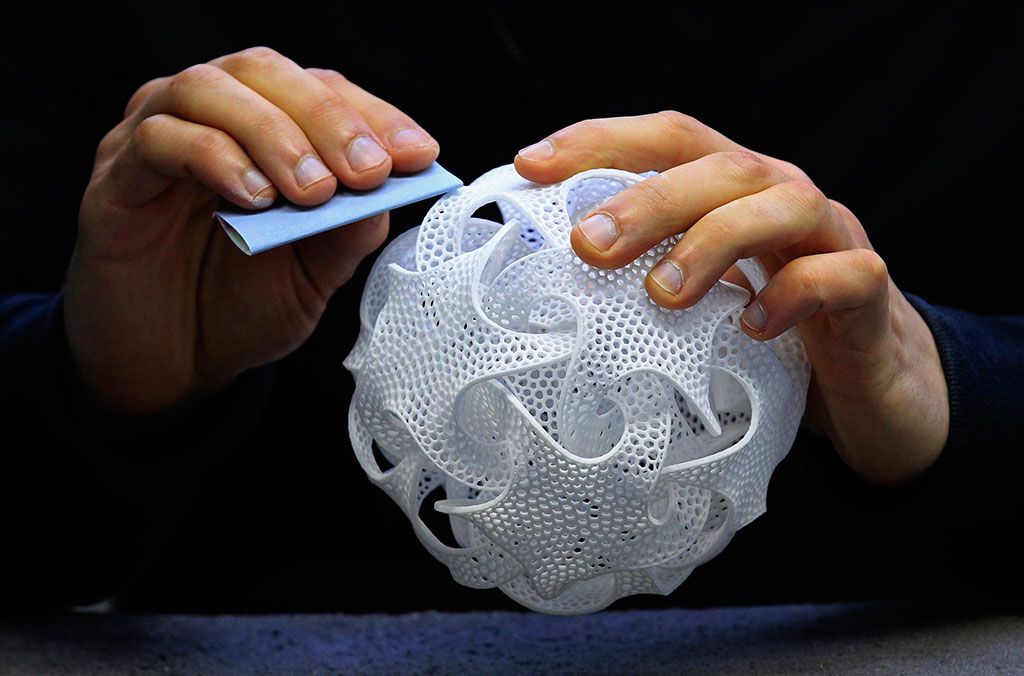 Here managers address the puzzles of Who are we? and What do we need to own to be who we are? As additive manufacturing allows companies to acquire printers that can make many products, and as idle capacity is traded with others in the business of offering different products, the answers to those questions will become far less clear. Suppose you have rows of printers in your facility that build auto parts one day, military equipment the next day, and toys the next. What industry are you part of? Traditional boundaries will blur. Yet managers need a strong sense of the company’s role in the world to make decisions about which assets they will invest in—or divest themselves of.
Here managers address the puzzles of Who are we? and What do we need to own to be who we are? As additive manufacturing allows companies to acquire printers that can make many products, and as idle capacity is traded with others in the business of offering different products, the answers to those questions will become far less clear. Suppose you have rows of printers in your facility that build auto parts one day, military equipment the next day, and toys the next. What industry are you part of? Traditional boundaries will blur. Yet managers need a strong sense of the company’s role in the world to make decisions about which assets they will invest in—or divest themselves of.
Aurora Flight Sciences can print the entire body of a drone in one build.
They may find their organizations evolving into something very different from what they have been. As companies are freed from many of the logistical requirements of standard manufacturing, they will have to look anew at the value of their capabilities and other assets and how those complement or compete with the capabilities of others.
The Platform Opportunity
One position in the ecosystem will prove to be the most central and powerful—and this fact is not lost on the management teams of the biggest players already in the business of additive manufacturing, such as eBay, IBM, Autodesk, PTC, Materialise, Stratasys, and 3D Systems. Many are vying to develop the platforms on which other companies will build and connect. They know that the role of platform provider is the biggest strategic objective they could pursue and that it’s still very much up for grabs.
Platforms are a prominent feature in highly digitized 21st-century markets, and additive manufacturing will be no exception. Here platform owners will be powerful because production itself is likely to matter less over time. Already some companies are setting up contract “printer farms” that will effectively commoditize the making of products on demand. Even the valuable designs for printable products, being purely digital and easily shared, will be hard to hold tight. (For that matter, 3-D scanning devices will make it possible to reverse-engineer products by capturing their geometric design information.)
(For that matter, 3-D scanning devices will make it possible to reverse-engineer products by capturing their geometric design information.)
Everyone in the system will have a stake in sustaining the platforms on which production is dynamically orchestrated, blueprints are stored and continually enhanced, raw materials supplies are monitored and purchased, and customer orders are received. Those that control the digital ecosystem will sit in the middle of a tremendous volume of industrial transactions, collecting and selling valuable information. They will engage in arbitrage and divide the work up among trusted parties or assign it in-house when appropriate. They will trade printer capacity and designs all around the world, influencing prices by controlling or redirecting the “deal flow” for both. Like commodities arbitrageurs, they will finance trades or buy low and sell high with the asymmetric information they gain from overseeing millions of transactions.
Any manufacturer whose strategy for the future includes additive techniques has to lay out a road map for getting there. Companies already on the journey are taking things step-by-step, but in three different ways.
Companies already on the journey are taking things step-by-step, but in three different ways.
Trickle Down
Some start with their high-end products, knowing that their most sophisticated (and price-insensitive) customers will appreciate the innovation and flexibility. The luxury will trickle down in the time-honored way as the technology matures and becomes more affordable. Automotive manufacturers, for example, tend to engineer one-off parts specially for Formula One racing cars and then find ways to introduce versions of those innovations to high-end sports and luxury cars. As engineers’ familiarity with the technology grows, they spot opportunities to bring it to parts for mass-market car segments.
Swap Out
Other pioneers proceed in a less splashy way, focusing first on the components of a given product that are easiest to migrate to additive manufacturing. The objective is to develop the organization’s know-how by advancing to more-challenging components of the same product. This is common in aerospace, where companies have selected a specific product, such as an F-35 fighter jet, and started with mundane brackets and braces before moving to, say, internal panels and partitions. As the manufacturers learn more, they begin printing the fighter’s exterior skin. Experiments with printing its load-bearing structures are now under way.
This is common in aerospace, where companies have selected a specific product, such as an F-35 fighter jet, and started with mundane brackets and braces before moving to, say, internal panels and partitions. As the manufacturers learn more, they begin printing the fighter’s exterior skin. Experiments with printing its load-bearing structures are now under way.
Cut Across
A third approach is to find components that show up in multiple products and use them to establish a 3-D foothold. For example, a design improvement for a fighter jet could be transferred to drones, missiles, or satellites. Such cross-product improvement builds knowledge and awareness throughout the company of how additive manufacturing can enhance performance on key dimensions such as weight, energy use, and flexibility.
The common theme here is small, incremental steps. In all three approaches, engineers are being given fascinating new puzzles to solve without having their world upended by still-evolving methods and materials, thus minimizing risk and resistance to change. It is up to more-senior managers to maintain the appropriate level of pressure for taking each successive step. As they push for further adoption, they should allow naysayers to explain why 3-D printing isn’t right for a given part or process, but then challenge them to overcome that roadblock. Traditionalists will always be quick to tell you what 3-D printing can’t do. Don’t let them blind you to what it can.
It is up to more-senior managers to maintain the appropriate level of pressure for taking each successive step. As they push for further adoption, they should allow naysayers to explain why 3-D printing isn’t right for a given part or process, but then challenge them to overcome that roadblock. Traditionalists will always be quick to tell you what 3-D printing can’t do. Don’t let them blind you to what it can.
Responsibility for aligning dispersed capacity with growing market demand will fall to a small number of companies—and if the whole system is to work efficiently, some will have to step up to it. Look for analogs to Google, eBay, Match.com, and Amazon to emerge as search engines, exchange platforms, branded marketplaces, and matchmakers among additive manufacturing printers, designers, and design repositories. Perhaps even automated trading will come into existence, along with markets for trading derivatives or futures on printer capacity and designs.
In essence, then, the owners of printer-based manufacturing assets will compete with the owners of information for the profits generated by the ecosystem. And in fairly short order, power will migrate from producers to large systems integrators, which will set up branded platforms with common standards to coordinate and support the system. They’ll foster innovation through open sourcing and acquiring or partnering with smaller companies that meet high standards of quality. Small companies may indeed continue to try out interesting new approaches on the margins—but we’ll need big organizations to oversee the experiments and then push them to be practical and scalable.
And in fairly short order, power will migrate from producers to large systems integrators, which will set up branded platforms with common standards to coordinate and support the system. They’ll foster innovation through open sourcing and acquiring or partnering with smaller companies that meet high standards of quality. Small companies may indeed continue to try out interesting new approaches on the margins—but we’ll need big organizations to oversee the experiments and then push them to be practical and scalable.
Digital History Replicated
Thinking about the unfolding revolution in additive manufacturing, it’s hard not to reflect on that great transformative technology, the internet. In terms of the latter’s history, it might be fair to say that additive manufacturing is only in 1995. Hype levels were high that year, yet no one imagined how commerce and life would change in the coming decade, with the arrival of Wi-Fi, smartphones, and cloud computing. Few foresaw the day that internet-based artificial intelligence and software systems could run factories—and even city infrastructures—better than people could.
The future of additive manufacturing will bring similar surprises that might look strictly logical in hindsight but are hard to picture today. Imagine how new, highly capable printers might replace highly skilled workers, shifting entire companies and even manufacturing-based countries into people-less production. In “machine organizations,” humans might work only to service the printers.
And that future will arrive quickly. Once companies put a toe in the water and experience the advantages of greater manufacturing flexibility, they tend to dive in deep. As materials science creates more printable substances, more manufacturers and products will follow. Local Motors recently demonstrated that it can print a good-looking roadster, including wheels, chassis, body, roof, interior seats, and dashboard but not yet drivetrain, from bottom to top in 48 hours. When it goes into production, the roadster, including drivetrain, will be priced at approximately $20,000. As the cost of 3-D equipment and materials falls, traditional methods’ remaining advantages in economies of scale are becoming a minor factor.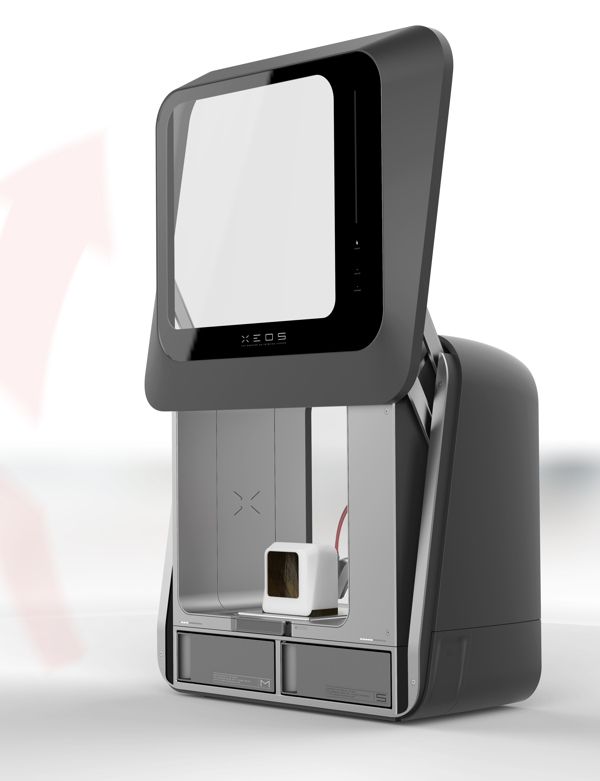
Local Motors can print a good-looking roadster from bottom to top in 48 hours.
Here’s what we can confidently expect: Within the next five years we will have fully automated, high-speed, large-quantity additive manufacturing systems that are economical even for standardized parts. Owing to the flexibility of those systems, customization or fragmentation in many product categories will then take off, further reducing conventional mass production’s market share.
Smart business leaders aren’t waiting for all the details and eventualities to reveal themselves. They can see clearly enough that additive manufacturing developments will change the way products are designed, made, bought, and delivered. They are taking the first steps in the redesign of manufacturing systems. They are envisioning the claims they will stake in the emerging ecosystem. They are making the many layers of decisions that will add up to advantage in a new world of 3-D printing.
A version of this article appeared in the May 2015 issue (pp.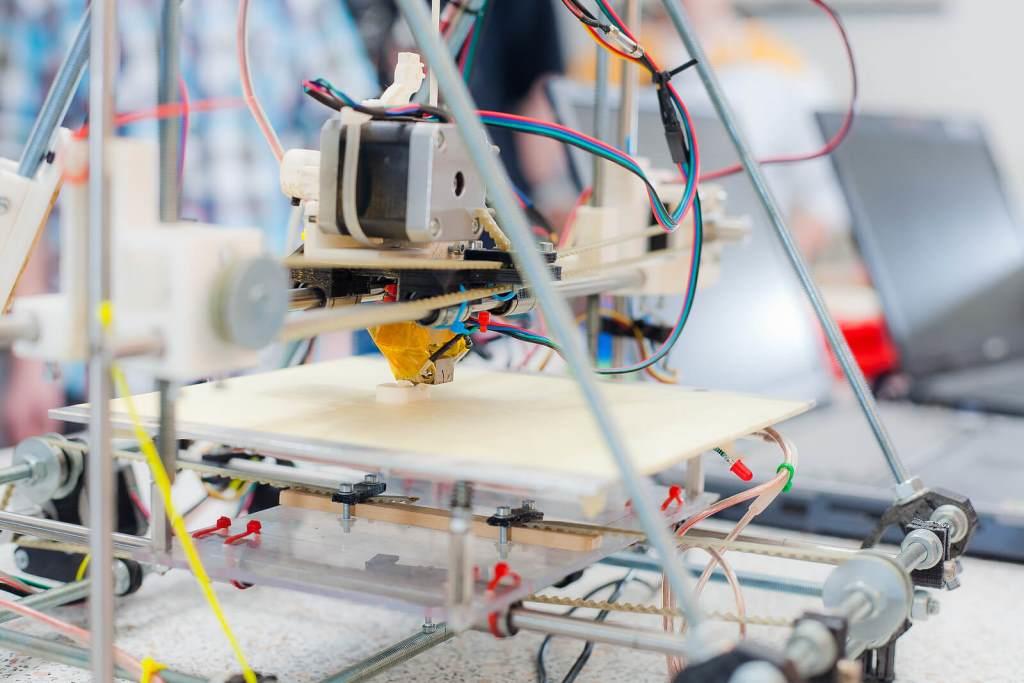 40–48) of Harvard Business Review.
40–48) of Harvard Business Review.
Why the 3D printing revolution hasn’t happened yet
The so-called “disruptive” technology that is 3D printing, now in its thirties, would seem to be coming back into fashion. Yet, despite its revolutionary technical properties and advantages, as well as very optimistic growth projections, the industrial and domestic uses of this technology seem to be progressing much more slowly than expected. As such, we are still waiting for the 3D printing revolution in our day to day lives, which experts have been predicting for years. For Thierry Rayna, who has been studying the adoption and impact of additive manufacturing for years, this revolution cannot take place without combining 3D printing with other “emerging” technologies, such as artificial intelligence, connected objects and augmented reality.
What is 3D printing used for in practice?
Thierry Rayna. Broadly speaking, there are four possible uses of 3D printing 1. Firstly, rapid prototyping appeared in the 1980s and was the only possible use of this technology for a long time. Next, 3D printers started to be used to design tools (moulds, cutting guides) for traditional manufacturing methods (known as “rapid tooling”). This allows the production of moulds (for injection moulding) for example, which often have a highly complex structure, at a much lower cost and much more quickly. Production in this way allows for faster cooling and demoulding, or better performing products thanks to the possibility of printing more complex surfaces (Michelin tyres, for example).
Broadly speaking, there are four possible uses of 3D printing 1. Firstly, rapid prototyping appeared in the 1980s and was the only possible use of this technology for a long time. Next, 3D printers started to be used to design tools (moulds, cutting guides) for traditional manufacturing methods (known as “rapid tooling”). This allows the production of moulds (for injection moulding) for example, which often have a highly complex structure, at a much lower cost and much more quickly. Production in this way allows for faster cooling and demoulding, or better performing products thanks to the possibility of printing more complex surfaces (Michelin tyres, for example).
The next step was the use of 3D printing to manufacture objects (or parts of them) directly, which offers a real cost advantage. As no tools are required for manufacturing (no moulds, etc.), the cost remains constant, and objects can be produced in very small series.
The final step is on-demand production carried out locally or even directly “at home” by consumers. This takes us from a situation in which production is based on estimated demand (hence the potential for waste), to one in which only what is needed is produced, with transportation being reserved for raw materials only. Indeed, the cost per unit in 3D printing is constant so there is much less reason to concentrate production geographically or temporally as is currently the case.
This final application is what we tend to imagine when thinking about 3D printing: domestic-use. But it should be noted that prototyping and tooling still account for ~90% of the uses of the technology. Direct manufacturing and “at home” production are (as yet) not widespread.
3D printed bicycle frame ©Thierry RaynaWhy do you think 3D printing has not found its place in our everyday life yet?
It has in fact already been integrated into our lives for certain uses: prototyping and tooling, but these uses are not very visible and are relatively non-disruptive. For the rest, and despite the significant advantages of 3D printing, we are still looking for uses, both domestic and industrial, that really make sense.
For the rest, and despite the significant advantages of 3D printing, we are still looking for uses, both domestic and industrial, that really make sense.
For the moment, 3D printing is still competing with other manufacturing technologies, which are undoubtedly less “modern” but highly optimised. In fact, even though “direct manufacture” of objects (i.e., local) is the most transformative application of the technology, it is still only really justified in three very specific cases: urgency or the need for a very short lead time; the manufacture of very small series or highly personalised products; or the manufacture of objects with a very complex design. However, these needs are only critical in very specific industries such as aeronautics, medicine, space and defence. All of which are, historically, key sectors for 3D printing.
Individuals, on the other hand, might feel such needs like avoiding the need to go to the shop or waiting for a delivery, creating custom objects or printing parts for repairing domestic appliances. However, there is then a purely practical issue: using a 3D printer is currently anything but plug-and-play! You have to digitally model the object using software that is still too complex, physically calibrate the machine before each print, and hope that the printing – which can take several hours, even for the simplest object – will go smoothly.
However, there is then a purely practical issue: using a 3D printer is currently anything but plug-and-play! You have to digitally model the object using software that is still too complex, physically calibrate the machine before each print, and hope that the printing – which can take several hours, even for the simplest object – will go smoothly.
The machines are highly sensitive, so temperature, humidity, vibrations or materials are all possible causes of failure2. If it doesn’t work properly you will have to start all over again. As for mass customisation, often perceived as the flagship argument of 3D printing, it is currently of little relevance, apart from very specific use cases like prosthetics. For a long time now, major brands have been offering the possibility of personalising objects (a pair of Nike shoes, for example), but few consumers actually do so. And customisation is nowadays limited to a few objects: what will happen when we can customise everything? Who will take the time to do it?
So, you don’t think 3D printing will take off?
Not until we find a use that really makes sense in relation to the technical (and not fantasy) characteristics of 3D printing.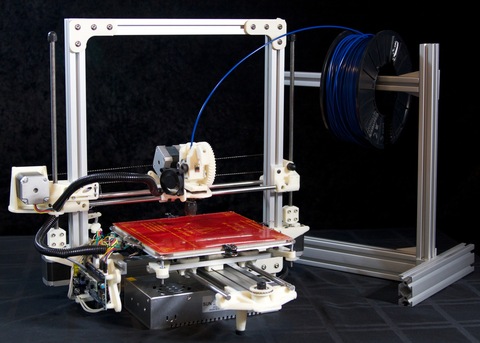 In direct or local manufacturing, the technology is currently only suitable for very specific sectors and under specific conditions. Rare are the cases where lead time, small series size, or the need for complexity are important. In the majority of cases, this argument does not apply for private individuals – delivery in urban areas sometimes takes less time than it takes to print the object! Moreover, even in industry, the generalisation of manufacturing using 3D printing is not a given.3
In direct or local manufacturing, the technology is currently only suitable for very specific sectors and under specific conditions. Rare are the cases where lead time, small series size, or the need for complexity are important. In the majority of cases, this argument does not apply for private individuals – delivery in urban areas sometimes takes less time than it takes to print the object! Moreover, even in industry, the generalisation of manufacturing using 3D printing is not a given.3
The fact that the manufacturing cost per unit remains constant is both good and bad news: as soon as the number of units produced is (relatively) high, the lack of economies of scale becomes particularly limiting. In this case, it is always more profitable to use traditional production methods. Moulds and tools are made which are certainly expensive, but they make it possible to produce tens or even hundreds of thousands of units quickly at very low unit cost.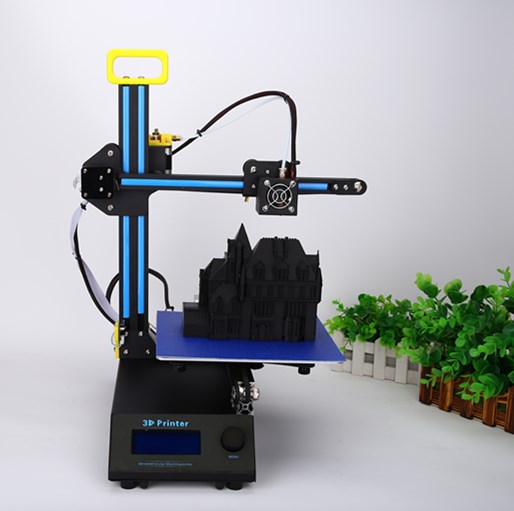
Additive manufacturing is not a new technology, its founding patents were filed in the mid-1980s, only ten years after the creation of the first personal computers. But ten years ago, personal computers were already ubiquitous. Ten years later, widespread, accessible 3D printing remains a distant dream, despite all its ‘revolutionary’ advantages. This shows that it is not the technology that makes the ‘disruption’, but the use that is made of it. PC sales, for example, plummeted in the 1980s because people didn’t know what to do with them… then (paper) printers, digital cameras and especially the Internet came along in the 1990s, and everyone cottoned on to their appeal.
I think that 3D printing will have the same fate. Once coupled with data collection via connected objects, and subsequent processing by artificial intelligence, its usefulness will become apparent, and will thus cease to be a niche technology.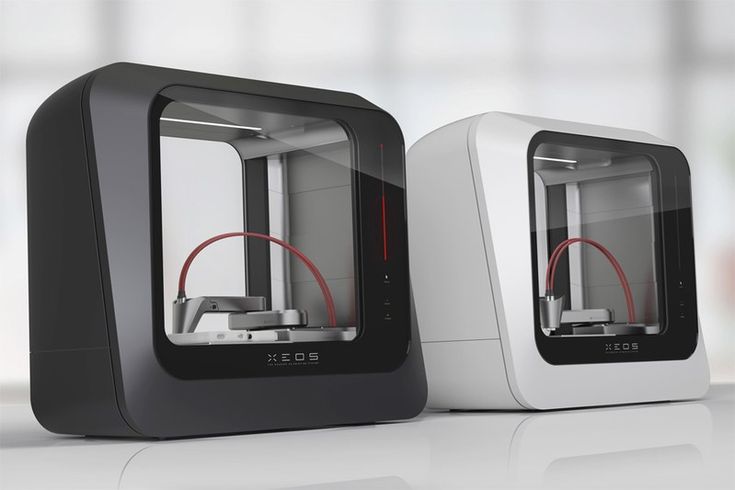 It will then be possible to print a large number of objects (or more particularly relevant parts of objects), for which customisation will be fine-tuned and automatic, with real added value. But even in this case, it may be enough to have a printer in a shop nearby. It is probably more science fiction that everyone will have a 3D printer at home one day! After all, decades after their invention, not everyone has a bread maker or a yoghurt maker at home…
It will then be possible to print a large number of objects (or more particularly relevant parts of objects), for which customisation will be fine-tuned and automatic, with real added value. But even in this case, it may be enough to have a printer in a shop nearby. It is probably more science fiction that everyone will have a 3D printer at home one day! After all, decades after their invention, not everyone has a bread maker or a yoghurt maker at home…
Interview by Juliette Parmentier
1https://www.sciencedirect.com/science/article/pii/S0040162515002425↑
2According to a report by the company Jabil, a lack of skills was in 71% of cases what deterred respondents from turning to additive manufacturing rather than traditional production: https://www.jabil.com/blog/3d-printing-trends-show-positive-outlook.html↑
3NDR: This may explain why, in 2018, only 4% of French companies were using 3D printers: https://www. insee.fr/fr/statistiques/3896461?sommaire=3856444↑
insee.fr/fr/statistiques/3896461?sommaire=3856444↑
A new revolution in 3d printing? 3d metal printing
If you haven't heard about it yet, you will soon. 3d printing is taking over the world at a hurricane pace. This is a new innovative technology that can be applied in various industries, including healthcare, automotive, engineering, finance and even architecture. There are even 3D printers that can be purchased for personal use at home. With them, you can make anything from gifts to toys for your children. In the next few years, 3D printing will become as commonplace as laser printing is today.
3D printing is advancing at a fast pace, so fast that today we have reached the point where metal is being used in this technology. Below is everything you need to know about metal 3d printing.
What is 3d printing?
So what is 3d printing? In simple terms, you are using a digital file to create a 3D object. When 3D printing, you resort to the so-called additive process.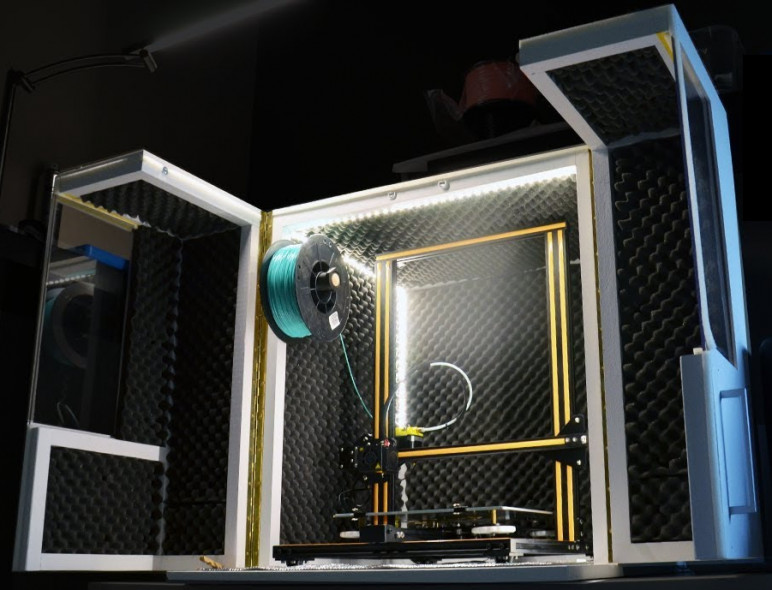 With an additive process, you build up layer by layer until the desired object is created. This does not resemble the traditional subtractive process, where material is removed from the workpiece until the desired object is obtained. Imagine that you are taking a piece of wood and planing it until you get the desired part. This is the subtractive method.
With an additive process, you build up layer by layer until the desired object is created. This does not resemble the traditional subtractive process, where material is removed from the workpiece until the desired object is obtained. Imagine that you are taking a piece of wood and planing it until you get the desired part. This is the subtractive method.
3D printing allows you to create designs with less waste, thus using less material than with the subtractive method. During 3D printing, instead of starting with a piece of wood or plastic, you start working on a digital design. The 3d printer reads this design and lays out the material in layers until the required design is complete.
What is 3d metal printing?
When using a 3d printer, you can work with different types of materials. Today, the most common materials are plastics of various types.
Plastics are inexpensive and readily available, making them popular with businesses and consumers.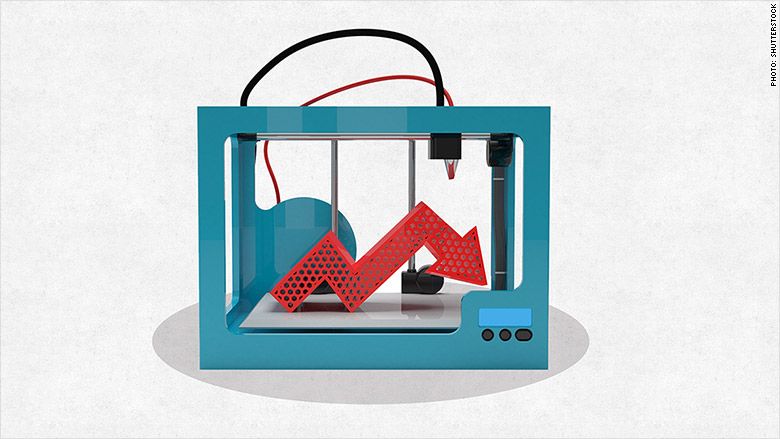 But plastic is not the only possibility. People have already started using cement 3d printing to build houses, and even 3d printed food! Another option is metal 3d printing. Metal 3D printing is revolutionizing mass production and changing the way parts are made. It was expected that 3D printing would absorb all other technologies, but so far this has not happened. But when metal printing can be made affordable and fast, it will change everything.
But plastic is not the only possibility. People have already started using cement 3d printing to build houses, and even 3d printed food! Another option is metal 3d printing. Metal 3D printing is revolutionizing mass production and changing the way parts are made. It was expected that 3D printing would absorb all other technologies, but so far this has not happened. But when metal printing can be made affordable and fast, it will change everything.
When using a 3d printer, you can work with different types of materials. Today, the most common materials are plastics of various types.
Plastics are inexpensive and readily available, making them popular with businesses and consumers. But plastic is not the only possibility. People have already started using cement 3d printing to build houses, and even 3d printed food! Another option is metal 3d printing. Metal 3D printing is revolutionizing mass production and changing the way parts are made. It was expected that 3D printing would absorb all other technologies, but so far this has not happened.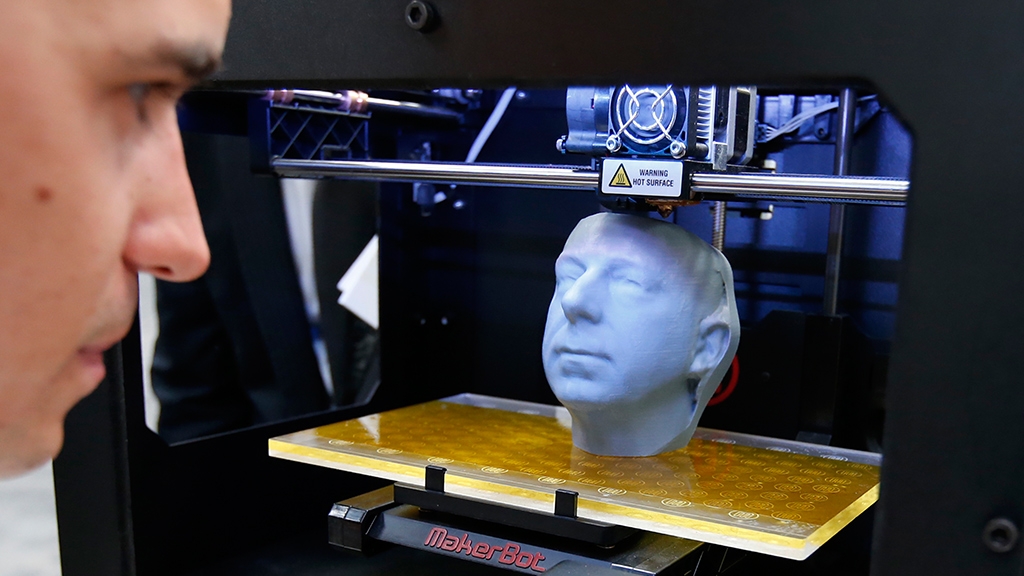 But when metal printing can be made affordable and fast, it will change everything.
But when metal printing can be made affordable and fast, it will change everything.
How does metal 3d printing work?
Metal 3d printing starts, like any other 3d printing, with a digital design, on the basis of which the 3d printer distributes the layers of material. But when printing with metal, the work is done in one of three ways.
The first method is metal sintering. When metal is sintered, metal powder and a binder resembling glue are applied in thin layers. Alternating layers of metal powder and binder are superimposed on each other and form the required part design. This process is repeated until the entire part is completed, which can take several hours.
Metal powder, not used during the process, helps to support the structure and separates from it after work is completed. After the part is formed, it is still very fragile. Therefore, the finished product is placed in an oven at 350 degrees for 34 hours to remove all moisture and strengthen the sintering.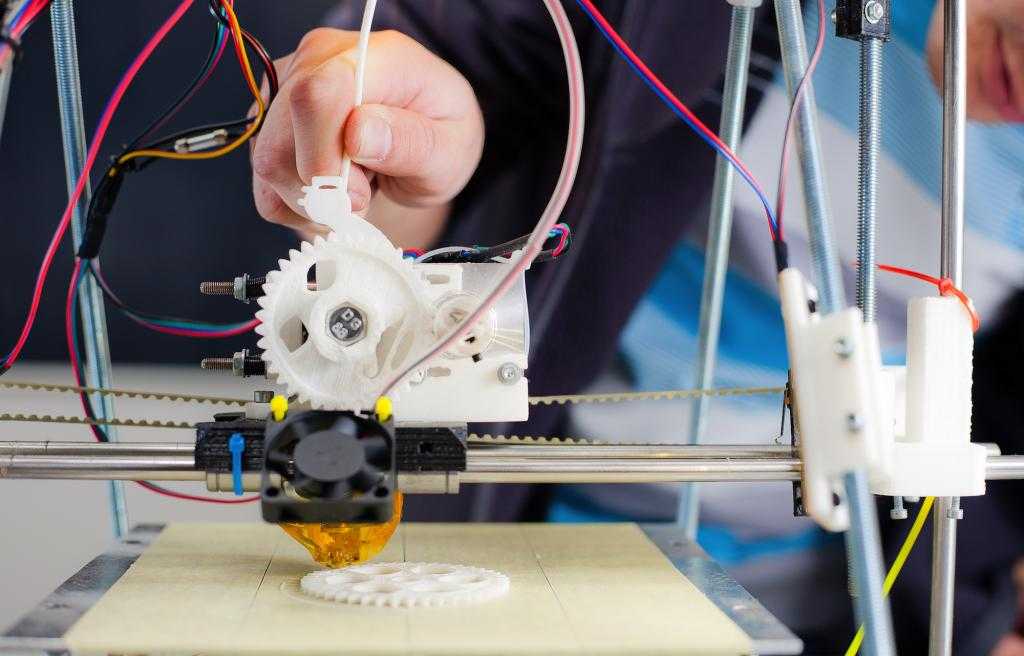
The second method is the fusing of powder coatings. This process is very similar to metal sintering, except that an energy source such as a laser is used instead of a binder.
The laser heats the metal powder deposited on the structure, melts it, and creates a hard layer. This process is repeated until the desired part is obtained.
The latest way to do 3D printing with metal is called directional deposition. This process uses metal wire or metal powder. A nozzle moving in different directions deposits layer after layer of metal wire or powder until the desired structure is formed. Upon completion, the metal is melted using a laser or an electron beam. This process is typically used to repair existing metal objects, but it can also be used to create new objects from scratch.
How fast is metal printing?
Many factors affect print speed. The most obvious of these is the size of the object being printed, and the capabilities of your printer. The type of material also affects the print speed. The production of a part can take from several minutes to several hours or even longer.
The production of a part can take from several minutes to several hours or even longer.
There are plans to increase the speed of metal 3d printing many times over. Boston-based Desktop Metal offers equipment that they claim can print 100 times faster while cutting costs by a factor of 20.
The increase in speed is due to the use of "ink" technology instead of laser technology. Today, metal printing is only used to make prototype parts, due to the low printing speed and high cost of materials. With new technology from Desktop Metal, as soon as their 3d printer is released, this process will become so cheap that it can be mass-produced.
How cheap is metal 3d printing?
Metal 3d printing is much more expensive than plastic 3d printing. Metal powder and wire are more expensive than plastic, and the 3D printer equipment itself for metal is much more expensive than for plastic. Printing with metal is also more expensive due to the fact that it is necessary to have an oven for sintering the structures after they are printed.
Cost is also affected by the size of the structure being made, as larger parts require more material.
Desktop Metal Printer will cost $120,000. For most of the metal printers you see online, the price isn't even listed. You need to contact their manufacturer and ask for pricing information.
There are companies that sell kits to convert any conventional 3d printer to metal printing. For such a kit, you will have to pay about $ 10,000.
Therefore, as you can see, metal 3D printing has not yet reached the point where it would become available to the general public.
Which companies sell metal 3d printers?
There aren't many companies that sell 3d printers that can print metal. The most well-known company, which has already been mentioned, is Desktop Metal.
They're not just going to sell 3d printers. They want to revolutionize manufacturing by changing the manufacturing process itself.
They plan to do this with their industrial scale Production System. This system will be used for fast and efficient mass production of metal parts. They are not looking to change the standards set for 3d printers, they intend to set new standards for manufacturing in general
This system will be used for fast and efficient mass production of metal parts. They are not looking to change the standards set for 3d printers, they intend to set new standards for manufacturing in general
In one of their demonstrations, they made 20,000 loops used in metal watch bracelets in just 4 hours.
What are the applications of this metal printing technology?
Once the technology becomes acceptable, applications for metal printing will be endless. Anything you can imagine becomes possible. Automotive parts, dental supplies, hospital supplies, office supplies, drills, and anything that is made of metal can all be 3D printed.
Boeing has already saved $3 million per aircraft by 3D printing titanium parts. Jet engines, missiles, nuclear weapons components, marine propulsion and much, much more. This list is endless.
Bridge in Amsterdam
One of the most impressive projects using metal 3d printing is the bridge in Amsterdam. The bridge was built literally in the air! It is 12.5m long and 4 robots worked to make it.
The bridge was built literally in the air! It is 12.5m long and 4 robots worked to make it.
The bridge required 4,500 kg of stainless steel and six months of work. MX3D staff used an industrial robot, a welding machine and their 3d printer software to complete the 3d print. They also plan to install sensors on the bridge to monitor changes in its condition over time. The bridge will be installed in the Red Light District of Amsterdam in early 2019of the year.
3d printing will change the way things are made. Today, 3D printers are used mainly for prototyping and small-scale production, but this technology is developing and will expand the use of 3D printers.
Metal 3D printing shows the most impressive growth. It will change everything that industry uses to develop and manufacture products. The speed of production will increase and costs will decrease, which will affect everyone affected, including consumers like you and me.
Source
Tags:
3d metal printing, Boeing, Desktop Metal printer, additive process, MX3D, industrial robot, 3d printers, Metal powder, Desktop Metal technology, laser technology
how additive technologies change the environment world
you are here
home
When new technologies become known to a wide range of people, then, as a rule, the service sector or industrial production is already actively using them.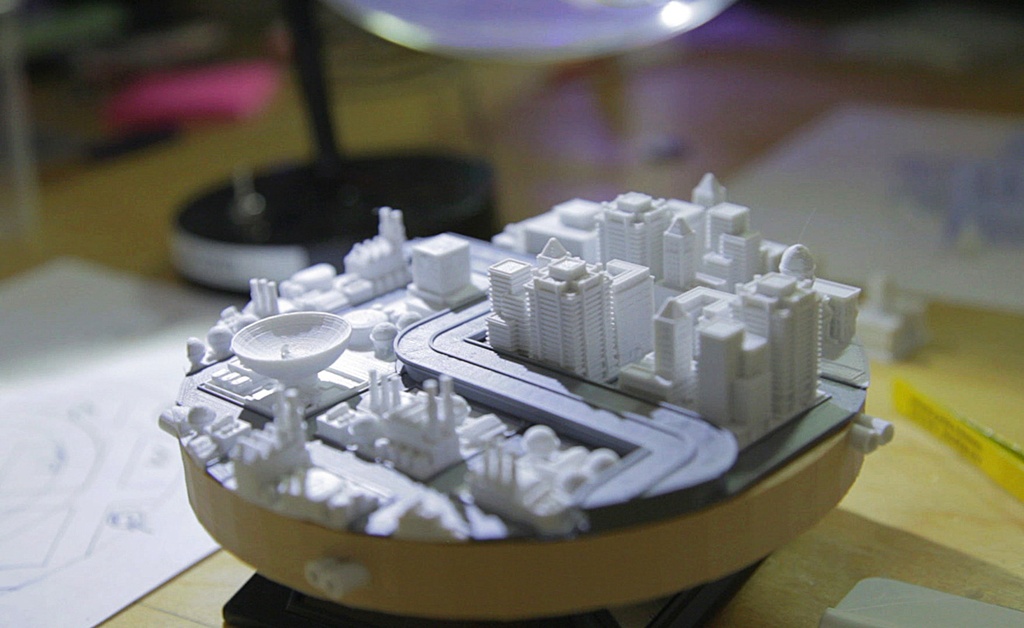 This is also the case with 3D printing, which experts predict a rapid growth until 2020. Then, according to rough estimates, the 3D printing market will grow to $ 5.2 billion. However, additive prototyping methods are already being introduced into key areas of human activity.
This is also the case with 3D printing, which experts predict a rapid growth until 2020. Then, according to rough estimates, the 3D printing market will grow to $ 5.2 billion. However, additive prototyping methods are already being introduced into key areas of human activity.
The greatest impact of developing technology is noticeable in medicine. At the moment, the scientists at Drexel University are studying cancerous tumors by combining malignant cells and biomaterial created using a three-dimensional printing facility. Successful operations are also being carried out to replace damaged parts of the joints with components developed on a 3D printer. And for faster restoration (by 40-80%) of one's own bones, a special plaster was created, the action of which is based on the healing properties of ultrasonic vibrations. Recently, the 3dVision 3D Printing Center also contributed to the development of the medical industry by manufacturing a completely new endoscope body. Also over the past year, more than a thousand cases for the artificial lung ventilation apparatus, which is used in resuscitation vehicles, were manufactured.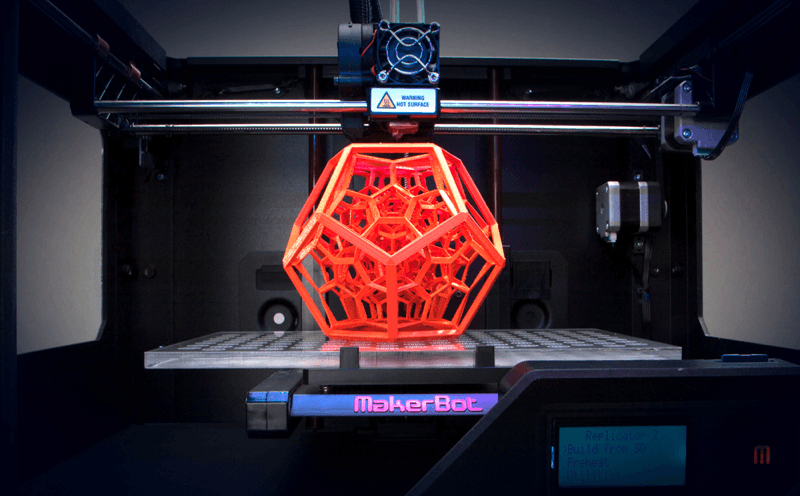 Also, at the moment we are participating in the development of housings for the exoskeleton, the device for instant testing of the patient's blood for certain changes in his condition, and many others.
Also, at the moment we are participating in the development of housings for the exoskeleton, the device for instant testing of the patient's blood for certain changes in his condition, and many others.
Now 3D printing appears in all areas of instrumentation. In May 2017, an additive manufacturing technology was created to solve the problem of the structural integrity of parts. The work of the new method is based on the action of the so-called electric plasma, which reacts with air and, translucent layer by layer, gives strength to the manufactured object. Perhaps this is the logic that will become fundamental for the aviation industry, because, according to experts, in three years more than 100,000 aircraft parts will be 3D printed products. And such a prospect seems very realistic, since on May 25, 2017, a rocket was launched into outer space, the engine of which is actually completely composed of materials created using 3D printing.
Since additive manufacturing is more efficient in terms of material consumption than substrate processes, 3D printing can be called an environmentally friendly manufacturing method.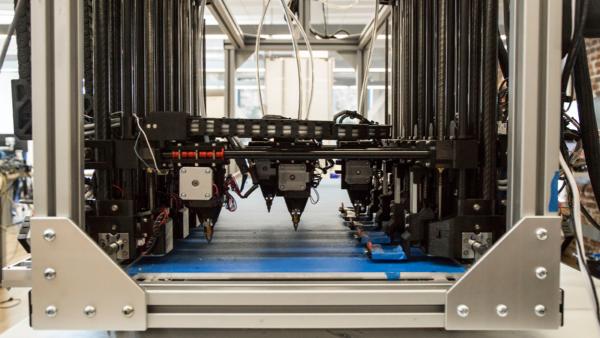 Instead of simply cutting off 2/3 of the excess material and then remelting it, the 3D printer uses exactly the amount of metal or plastic required for the product. Thus, there is no need to spend resources on processing unused material. By the way, about plastic. 3D Systems has developed and launched the Ekocycle Cube printer, which uses recycled plastic into filaments. Studies have shown that the traditional way of recycling polymers requires more energy compared to creating special 3D printing spools from recycled materials.
Instead of simply cutting off 2/3 of the excess material and then remelting it, the 3D printer uses exactly the amount of metal or plastic required for the product. Thus, there is no need to spend resources on processing unused material. By the way, about plastic. 3D Systems has developed and launched the Ekocycle Cube printer, which uses recycled plastic into filaments. Studies have shown that the traditional way of recycling polymers requires more energy compared to creating special 3D printing spools from recycled materials.
We have given just a few examples of how 3D printing affects manufacturing processes in some important areas of human activity. But there is also the textile sector, the food industry, construction, the military industry, after all. Every week there is something new in the world created with the help of 3D printing. What once seemed unbelievable is now becoming a reality. Well, the pace at which additive manufacturing is developing proves that the limits of 3D printing are only in our heads.
3dVision is well aware of how dynamically the additive manufacturing industry is developing, and therefore we are working every day to become better so that the needs of absolutely every client are 100% satisfied. The 3D printing center works not only with individuals and legal entities, but also with state-owned enterprises. So, for the World Cup, we received a large order for the manufacture of a video traffic detector - a device that analyzes traffic in real time, thus optimizing the traffic management strategy.
3dVision is a unique company in its kind, since we are a full-cycle company, that is, specialists can take an order at any stage of its production. Our organization is able to work both with point prototypes (for example, creating a mock-up of a new case for testing and certification), and with products produced in millions of copies (first of all, we are talking about molding plastic cases into molds).
Absolutely all our customers have the opportunity, if necessary, to receive qualified technical support at any stage of the order.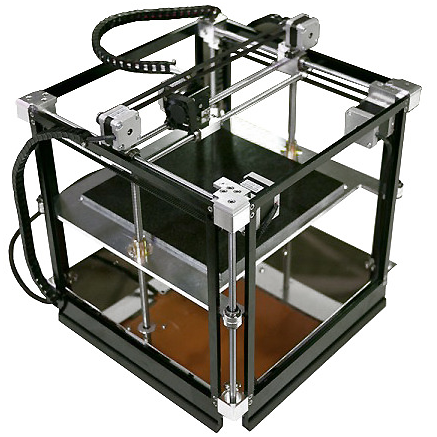 For the convenience and expansion of the number of customers, 3dVision is not limited to working in Moscow and St. Petersburg, we are pleased to cooperate with representatives of other regions of our country. Thanks to the well-established courier delivery network, the company is able to ensure the receipt of the product within a few days after the application for the manufacture of the model.
For the convenience and expansion of the number of customers, 3dVision is not limited to working in Moscow and St. Petersburg, we are pleased to cooperate with representatives of other regions of our country. Thanks to the well-established courier delivery network, the company is able to ensure the receipt of the product within a few days after the application for the manufacture of the model.
You can order from us:
• 3D printing and rapid prototyping , which today are the most demanded direction in the industry;
• 3D Modeling , during which the 3dVision 3D Printing Center will help you create models for any purpose;
• 3D-scan , which allows to study the structure of the investigated object;
• prototyping mainly focused on making models of architectural structures;
• molding in silicone molds , which, prior to the production of an expensive mold for plastic injection, allows you to get the first plastic cases for all kinds of experiments.